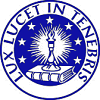History - 2. Historical Summary
1. How the Huguenots got their name
2. Summary of their history from Calvin to the Great Elector of Brandenburg
3. The Huguenots in France - the French Reformation
4. The French Reformer John Calvin
5. The Massacre of St. Bartholomew's Day - the first pogrom in modern times
6. From the Edict of Nantes 1598 to the Edict of Fontainebleau 1685
7. The Flight of the Huguenots
8. Maps
From Calvin to the Great Elector of Brandenburg
| 1509-1564 | John Calvin, French reformer |
| 1559 | The first national synod of the Reformed Protestants of France, held in Paris |
| 1562-1598 | The French Wars of Religion |
| 23. August 1572 | The Massacre of St Bartholomew's Day in Paris |
| 13. April 1598 | Promulgation of the Edict of Nantes by the French King Henry IV |
| 28. Oktober 1626 | The fall of the citadel La Rochelle, the last Huguenot stronghold |
| 1681 | The beginning of the "dragonnades", forced conversion by billeting troops on the Protestants |
| 18. Oktober 1685 | Revocation of the Edict of Nantes by the French King Louis XIV and the flight of around 200.000 Huguenots |
| 29. Oktober 1685 | The Edict of Potsdam issued by the Great Elector Frederick William of Brandenburg |
Huguenots in Germany
Approximately 44.000 Huguenots came to Germany, to Protestant states:
| Brandenburg-Prussia | approx. 20.000 |
| Hesse-Kassel | approx. 3.800 |
| the Rhein-Main region | approx. 3.400 |
| the Palatinate and Zweibrücken | approx. 3.400 |
| Franconia | approx. 3.200 |
| Württemberg | approx. 3.000 |
| Hanseatic cities | approx. 1.500 |
| Lower Saxony | approx. 1.500 |
Others went to Baden-Durlach, the Electorate of Saxony (Leipzig and Dresden), the Saarland (Ludweiler in Warndt), to Thüringen, Mecklenburg, Anhalt, Lippe-Detmold, Danzig, Neuwied, Waldeck and the principality of Berg, etc.
|


